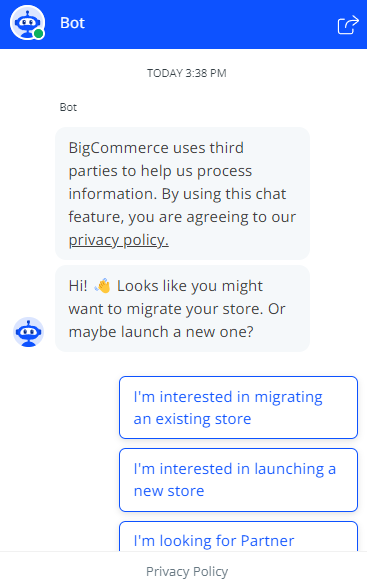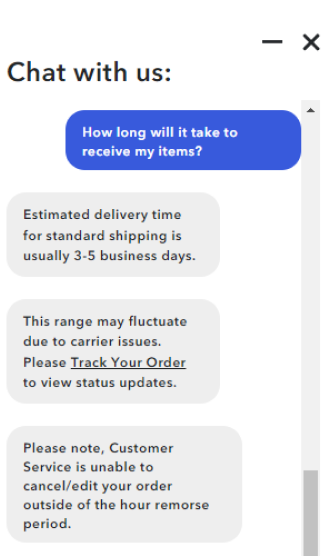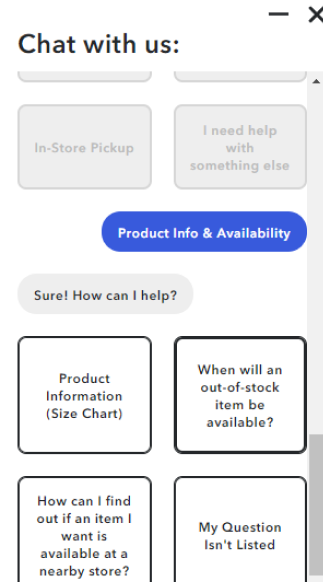
Ecommerce chatbots are revolutionizing the way businesses interact with their customers. By leveraging artificial intelligence (AI) and machine learning, these chatbots can provide instant, personalized responses, enhancing the overall customer experience and driving sales. In this blog, we will delve into the basics of ecommerce chatbots, explore their benefits, and highlight various use cases that demonstrate their value in the ecommerce industry.
Understanding Ecommerce Chatbots
What Are Ecommerce Chatbots?
Ecommerce chatbots are AI-powered virtual assistants designed to interact with customers on ecommerce platforms. They use natural language processing (NLP) to understand and respond to customer queries in real-time. These chatbots can be integrated into websites, mobile apps, and social media platforms, providing seamless and consistent customer service.
Chatbots have evolved from simple rule-based systems to sophisticated AI-driven assistants. They can now comprehend complex queries and offer contextual responses, making them an indispensable tool for modern ecommerce businesses. As technology continues to advance, chatbots are becoming more intuitive, offering a more human-like interaction experience.
How Do Ecommerce Chatbots Work?
 BigCommerce.com Chatbot Example
BigCommerce.com Chatbot ExampleEcommerce chatbots operate using sophisticated algorithms that analyze customer inputs and generate appropriate responses. They can handle a variety of tasks, from answering simple questions to processing complex transactions. The chatbots learn from each interaction, continually improving their accuracy and efficiency over time.
At the core of a chatbot’s functionality is its ability to process language. Natural language processing (NLP) enables chatbots to understand and interpret customer queries accurately. Machine learning algorithms help the chatbot to learn from previous interactions, refining its responses and improving its performance. This continuous learning loop is what makes chatbots increasingly effective over time.
Benefits of Ecommerce Chatbots
Ecommerce chatbots offer a myriad of benefits that can transform the customer experience and streamline your business operations.
Improved Customer Service
- Instant Responses: Chatbots provide instant responses to customer inquiries, reducing wait times and improving customer satisfaction.
- 24/7 Availability: They are available around the clock, ensuring that customers can receive assistance at any time, day or night.
Increased Sales
By providing personalized recommendations and assisting with the purchasing process, chatbots can help drive sales. For instance, a chatbot can guide customers through product selections based on their preferences and past purchases. This personalized shopping experience not only enhances customer satisfaction but also increases the likelihood of sales. Additionally, chatbots can upsell and cross-sell products, further boosting revenue.
Cost Efficiency
Employing chatbots can significantly reduce the need for human customer service representatives, lowering operational costs. Chatbots can handle multiple inquiries simultaneously, making them a cost-effective solution for high-volume customer service environments. This efficiency allows businesses to allocate human resources to more complex and value-adding tasks.
Enhanced Customer Engagement
Chatbots can engage customers through personalized interactions, making the shopping experience more enjoyable. They can send proactive messages about promotions, new arrivals, and abandoned carts, encouraging customers to complete their purchases. This proactive engagement can lead to higher conversion rates and increased customer loyalty.
Data Collection and Analysis
Chatbots collect valuable data on customer preferences, behavior, and feedback. This information can be used to improve products, services, and marketing strategies. By analyzing chatbot interactions, businesses can gain insights into customer needs and preferences, enabling them to make informed decisions and tailor their offerings accordingly.
Use Cases of Ecommerce Chatbots
Ecommerce chatbots can be deployed in various ways to enhance the customer experience and streamline operations. Here are some practical use cases:
Customer Support
One of the most common use cases for ecommerce chatbots is providing customer support. Chatbots can answer frequently asked questions, troubleshoot issues, and guide customers through return and exchange processes. By handling routine inquiries, chatbots free up human agents to focus on more complex tasks.
For example, a customer might have questions about the return policy or need assistance with tracking their order. A chatbot can provide instant answers, ensuring that the customer’s needs are met promptly. This not only improves customer satisfaction but also reduces the workload on human customer service representatives.
Personalized Shopping Assistance
Chatbots can act as personal shopping assistants, helping customers find products that meet their needs. By analyzing customer preferences and purchase history, chatbots can offer tailored product recommendations and provide detailed information about each item. This personalized approach can enhance the shopping experience and increase the likelihood of purchase.
For instance, if a customer is looking for a new pair of running shoes, a chatbot can suggest options based on the customer’s previous purchases, preferences, and current trends. This targeted assistance can make the shopping process more efficient and enjoyable.
Order Management
Customers can use chatbots to check the status of their orders, track shipments, and receive updates on delivery times. This not only improves the customer experience but also reduces the number of inquiries directed to customer service representatives.
 American Eagle Outfitters Order Management
American Eagle Outfitters Order ManagementImagine a customer waiting for their order and wanting to know its status. Instead of contacting customer service, they can simply ask the chatbot for updates. The chatbot can provide real-time information, keeping the customer informed and satisfied.
Marketing and Promotions
Chatbots can be used to deliver targeted marketing messages and promotions to customers. They can notify customers about sales, special offers, and new product launches, driving engagement and boosting sales.
For example, a chatbot can inform a customer about a limited-time discount on items they have previously shown interest in. This targeted marketing can increase the chances of conversion and enhance the overall effectiveness of digital marketing campaigns.
Abandoned Cart Recovery
Abandoned carts are a significant challenge in ecommerce. Chatbots can identify customers who have abandoned their carts and send reminder messages to encourage them to complete their purchases. Offering incentives, such as discounts or free shipping, can further entice customers to finalize their orders.
For instance, a chatbot can send a friendly reminder to a customer who has abandoned their cart, offering a small discount to encourage completion of the purchase. This proactive approach can help recover lost sales and increase revenue.
Feedback Collection
Collecting customer feedback is crucial for continuous improvement. Chatbots can prompt customers to leave reviews and provide feedback on their shopping experience. This data can be analyzed to identify areas for enhancement and address any issues promptly.
 American Eagle Outfitters Product Availability
American Eagle Outfitters Product Availability For example, after a purchase is completed, a chatbot can ask the customer for feedback on their experience. This feedback can provide valuable insights into what is working well and what needs improvement, helping businesses refine their processes and offerings.
Payment Processing
Chatbots can facilitate secure payment processing within the chat interface, making it convenient for customers to complete their purchases. This streamlines the checkout process and reduces the likelihood of cart abandonment.
For instance, a customer can ask the chatbot to process their payment directly within the chat, making the transaction quick and seamless. This convenience can enhance the overall shopping experience and encourage repeat purchases.
Product Availability Notifications
Customers often want to be informed when out-of-stock items become available again. Chatbots can send notifications to customers when their desired products are restocked, helping to capture potential sales that might have been lost otherwise.
For example, a chatbot can notify a customer when a previously out-of-stock item is back in inventory, prompting the customer to make a purchase. This proactive communication can increase sales and improve customer satisfaction.
Best Practices for Implementing Ecommerce Chatbots
Define Clear Objectives
Before implementing a chatbot, it’s essential to define clear objectives. Determine what you want the chatbot to achieve, such as improving customer service, increasing sales, or enhancing customer engagement. Clear goals will guide the design and functionality of the chatbot.
Choose the Right Platform
Select a chatbot platform that integrates seamlessly with your ecommerce infrastructure. Consider factors such as:
- Ease of use
- Scalability
- Compatibility with your existing systems
Train Your Chatbot
Ensure your chatbot is well-trained to handle a wide range of customer inquiries. Regularly update its knowledge base to keep up with new products, services, and promotions. Training should be an ongoing process to ensure the chatbot remains effective and up-to-date.
Monitor and Optimize
Continuously monitor the performance of your chatbot and make necessary adjustments to improve its accuracy and efficiency. Use analytics to track customer interactions, identify areas for improvement, and optimize responses based on customer feedback.
Provide Human Backup
While chatbots can handle many tasks, it’s important to have human customer service representatives available for more complex inquiries. Ensure a smooth transition from chatbot to human agent when needed, providing a seamless customer experience.
Conclusion
Ecommerce chatbots represent a formidable asset for businesses aiming to elevate customer service standards, boost sales figures, and streamline operational efficiency. With a clear grasp of their functionalities and a commitment to best practices, companies can harness the potential of chatbots to deliver outstanding customer experiences, thereby securing a distinct competitive advantage in the marketplace.

 Eashan Mehta
Eashan Mehta




